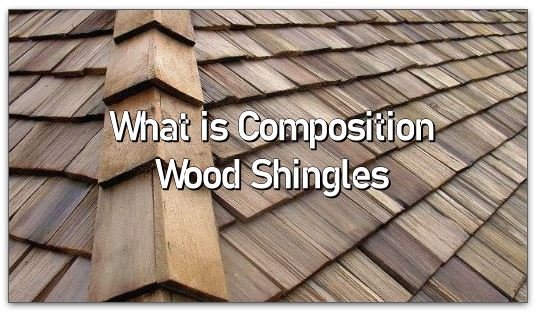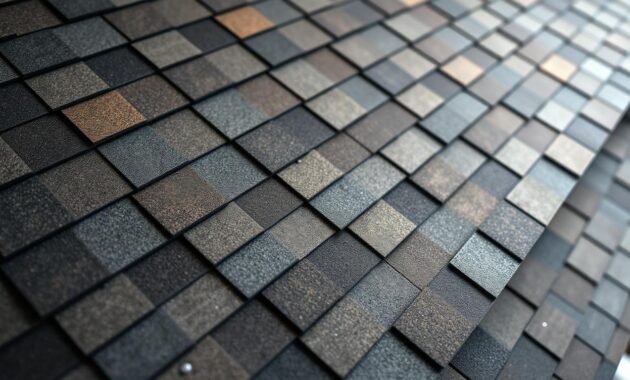Choosing the right roofing can be tough. It’s all about finding something that’s both strong and easy on the wallet. Traditional options often come with a hefty price tag and a lot of hassle. That’s where composition roofing comes in, a smart pick that tackles these issues.
Let’s dive into what makes composition roofs tick. They’re a mix of materials like fiberglass, asphalt, and granules. This blend creates a roof that’s both affordable and reliable, protecting your home from the outside world.
Learning about composition roofs can help you see why they’re a favorite among homeowners. They offer a smart, lasting solution for your roof.

Understanding Composition Roofs: A Complete Overview
Composition roofing is a smart way to keep homes safe from the weather. As a roofing expert, I’ve seen how these systems use different materials to make strong roofs. An asphalt shingle roof is more than just a shield.
Let’s look at what makes composition roofs a favorite among homeowners in the U.S.:
Basic Components and Materials
A composition roof has several important layers for the best protection. The main parts are:
- Fiberglass mat foundation
- Waterproof asphalt coating
- Protective mineral granules
The Role of Fiberglass Mat
The fiberglass mat is the heart of modern composition shingles. It’s light but strong, giving each shingle its structure. The mat is made to be strong and flexible, key for lasting roofs.
Asphalt and Granule Integration
Asphalt is the main waterproofing part of composition roofing. Mineral granules are added to the asphalt layer. They:
- Block harmful UV rays
- Add color and beauty
- Make the roof last longer
Each shingle is made to work well, keeping your home safe from the weather. The mix of fiberglass, asphalt, and granules makes a roof that’s strong and looks good.
The Evolution of Asphalt Roofing Systems
Exploring roofing technologies, I was amazed by asphalt roofing’s evolution. It shows American innovation and engineering skills.
In the beginning, roofing was simple. Three-tab shingles were the norm, providing basic protection. These early asphalt roofs were functional but lacked in design and durability.
- 1900s: Basic three-tab shingle designs emerge
- 1950s: Improvements in manufacturing techniques
- 1980s: Introduction of architectural shingles
- 2000s: Advanced roofing systems with 30-year warranties
Modern architectural shingles mark a big step in asphalt roofing. They offer better durability, looks, and can last up to 30 years or more.
Asphalt roofing keeps getting better. Now, shingles have more layers, better granule coatings, and withstand harsh weather.
Today’s roofs are much different. With new materials and methods, homeowners have many asphalt roofing choices. These choices offer great performance, style, and long-lasting protection.
What is Composition Roof: Core Materials and Construction
Understanding how an asphalt shingle roof is made shows why it’s so popular. A composition roof is a type of roofing made to protect and last long.
The core of a composition roof has three key layers. These layers work together to make a strong roofing solution:
Fiberglass Foundation Layer
The heart of a composition roof is the fiberglass mat. This layer gives the roof great strength and stability. It’s made by weaving glass fibers into a strong base.
- Lightweight yet incredibly strong
- Resistant to tearing and breaking
- Provides consistent structural integrity
Waterproof Asphalt Coating
The fiberglass mat gets a layer of high-quality asphalt. This coating keeps moisture out. It protects your home from rain, snow, and more.
Protective Granule Surface
The top layer has mineral granules. These granules do a few important things:
- Block harmful UV radiation
- Enhance the roof’s aesthetic appeal
- Provide additional weather resistance
With these three layers, composition roofs offer a great mix of performance, durability, and looks.
Types of Composition Shingles for Modern Homes

Choosing the right shingle for your home is key. It affects how your roof looks and works. Let’s explore the main shingle types available today.
Roofing materials have changed a lot. Now, homeowners have many shingle options. The main ones are:
- 3-tab shingles
- Architectural shingles
- Luxury shingles
3-tab shingles are the oldest and cheapest. They are flat and simple, making your roof look clean. But, they don’t last as long as other types.
Architectural shingles look more advanced. They have layers that give them depth and texture, like wood shakes or slate. They last longer and make your home look better.
Luxury shingles are the top choice. They look like natural materials like slate or wood. They have more details and perform better.
What shingle you pick depends on your budget, style, and how long you want it to last. Each shingle has its own benefits for your roof.
Architectural Shingles vs Traditional 3-Tab Options
Homeowners have to choose between architectural shingles and 3-tab shingles for their roofs. Each type has its own benefits for durability, looks, and cost over time.
Architectural shingles are a top choice for roofs. They offer more than standard 3-tab shingles. These shingles give your home a more advanced protection.
Dimensional Design Features
Architectural shingles have a layered, textured look. They don’t look like flat 3-tab shingles. Instead, they have a three-dimensional design that looks like wood shake roofing.
- Enhanced visual depth and shadow lines
- More complex and attractive roof profile
- Greater aesthetic appeal for modern homes
Durability Comparison
Architectural shingles are more durable than 3-tab shingles. They are thicker and better at handling wind, impact, and weather.
- Wind resistance up to 130 mph
- Better impact protection
- Extended lifespan of 25-30 years
Cost Considerations
Architectural shingles cost more at first than 3-tab shingles. But, they save money in the long run. They last longer and need less maintenance.
| Shingle Type | Initial Cost | Lifespan | Replacement Frequency |
|---|---|---|---|
| 3-Tab Shingles | Lower | 15-20 years | More frequent |
| Architectural Shingles | Higher | 25-30 years | Less frequent |
Choosing the right roofing material depends on your needs, budget, and future home care plans.
Lifespan and Durability of Composition Roofing
When you choose a new roof, knowing how long it lasts is key. Different types of composition roofs last for different times. They can keep your home safe for many years.
Composition roofs last from 25 to 50 years, based on the shingle type. 3-tab shingles usually last 20-25 years. But architectural shingles can last over 30 years with good care.
- 3-tab shingles: Approximately 20-25 years lifespan
- Architectural shingles: Up to 30 years or more
- Luxury composition shingles: Warranties up to 50 years
Many things affect how long your roof lasts. Weather is a big factor. Too much sun, rain, or temperature changes can wear it down. But, if installed right and maintained well, your roof can last 30 years or even 50.
When picking a roof, look at the warranty. Good composition shingles often have longer warranties. This shows they can handle different weather conditions well.
Read also: What Are Composition Shingles?
Benefits of Choosing a Composition Roof
Choosing the right roofing material is key to protecting your home and increasing its value. Composition roofs are a top choice for homeowners looking for a reliable and smart option.
When it’s time for a roof replacement, composition roofing is a great choice. It offers many benefits that make it appealing to many families. These roofs combine performance, durability, and beauty in one package.
Weather Resistance Properties
Composition roofs are great at keeping homes safe from harsh weather. They resist:
- Heavy rain and moisture
- Strong wind gusts
- Extreme temperature changes
- UV radiation
Fire-Resistant Qualities
Homeowners want to feel safe, and fire-resistant roofing helps. Composition roofs are top-notch in fire protection. Many types even get a Class A fire rating, the highest in the industry.
Cost-Effective Solutions
A cost-effective roof doesn’t mean you have to sacrifice quality. Composition roofs offer great value with:
- Lower initial costs
- Less maintenance needed
- A longer lifespan than traditional roofs
- Improved energy efficiency
Choosing a composition roof is a smart, long-term choice. It protects your home and keeps your budget in check.
Installation Process and Best Practices

As a roofing expert, I know a good roof replacement needs careful planning. Installing a composition roof is a detailed process that requires skill and precision.
Read aslo: Do I Need a Permit to Replace My Roof?
Homeowners should follow important steps for a successful roof installation:
- Comprehensive roof deck inspection
- Complete removal of existing roofing materials
- Thorough deck repair and preparation
- Selection of appropriate underlayment
- Precise shingle placement and securing
Choosing the right composite roofing material is key. Each material has its own installation method to ensure it lasts long and works well.
| Installation Stage | Key Considerations |
|---|---|
| Deck Preparation | Ensure smooth, clean surface without structural damage |
| Underlayment | Use high-quality waterproof membrane |
| Shingle Application | Maintain proper overlap and alignment |
| Ventilation | Install adequate roof ventilation systems |
I highly suggest hiring a certified pro for your roof replacement. The right installation affects the roof’s warranty, performance, and lifespan. Skipping important steps can cause big problems later.
Professional installers know the specific needs of each composite roofing material. They make sure your project meets all the necessary standards and codes.
Maintenance Requirements and Long-Term Care
Keeping your asphalt shingle roof in good shape is key to its long life. A well-cared-for roof can last 30 years or more. Regular upkeep isn’t just for looks; it also saves you money and keeps your roof strong.
- Do roof checks twice a year
- Keep gutters and downspouts clean
- Remove leaves and branches
- Look for damage or wear
- Trim tree branches that hang over
Your asphalt shingle roof needs special care to stay in top shape. Look out for signs like:
| Issue | Potential Consequence | Recommended Action |
|---|---|---|
| Curling Shingles | Water Penetration | Professional Inspection |
| Granule Loss | Reduced UV Protection | Partial Roof Replacement |
| Dark Streaks | Algae Growth | Cleaning or Treatment |
Getting your roof checked by pros every few years can spot problems early. By sticking to regular maintenance, you’ll safeguard your home and extend your roof’s life.
Conclusion
Exploring composition roofing has shown me why it’s a top choice for many homeowners. It’s durable, looks great, and is affordable. These qualities make it a standout in the home improvement world.
Choosing a composite roofing material means getting strong protection against all kinds of weather. The layers of fiberglass, asphalt, and granules make it last long. It looks good too, even in tough weather.
Choosing the right roofing system is all about what you need, your local weather, and your budget. Knowing about composition roofs helps you pick the best one. This choice can boost your home’s value and keep it safe for years.
A well-maintained composition roof is a wise investment in your home’s future. With the right care and checks, it will keep your home safe and looking great. It’s a reliable choice for homeowners who want peace of mind.




